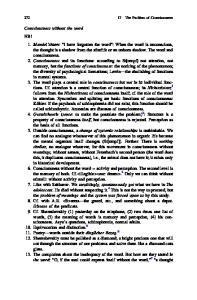Transient Loss of Consciousness
Transient loss of consciousness (TLoC) is a frequent manifestation in the general population, constituting a significant reason for admission to the emergency room (ER). The nature of TLoC, their differential diagnosis and approache are described in this
- PDF / 11,328,113 Bytes
- 631 Pages / 360.04 x 589.61 pts Page_size
- 58 Downloads / 470 Views
123
Decision Algorithms for Emergency Neurology
Giuseppe Micieli • Anna Cavallini Stefano Ricci • Domenico Consoli Jonathan A. Edlow Editors
Decision Algorithms for Emergency Neurology
Editors
Giuseppe Micieli Department of Emergency Neurology IRCCS Mondino Foundation Pavia Italy
Anna Cavallini Cerebrovascular Disease Department IRCCS Mondino Foundation Pavia Italy
Stefano Ricci Department of Neurology USL Umbria 1 Città di Castello Perugia Italy
Domenico Consoli Jazzolino Hospital Ospedale G. Jazzolino Vibo Valentia Italy
Jonathan A. Edlow Department of Emergency Medicine Beth Israel Deaconess Medical Center, Harvard Medical School Boston, MA USA ISBN 978-3-030-51275-0 ISBN 978-3-030-51276-7 (eBook) https://doi.org/10.1007/978-3-030-51276-7 © Società Italiana di Neurologia 2021 This work is subject to copyright. All rights are reserved by the Publisher, whether the whole or part of the material is concerned, specifically the rights of translation, reprinting, reuse of illustrations, recitation, broadcasting, reproduction on microfilms or in any other physical way, and transmission or information storage and retrieval, electronic adaptation, computer software, or by similar or dissimilar methodology now known or hereafter developed. The use of general descriptive names, registered names, trademarks, service marks, etc. in this publication does not imply, even in the absence of a specific statement, that such names are exempt from the relevant protective laws and regulations and therefore free for general use. The publisher, the authors, and the editors are safe to assume that the advice and information in this book are believed to be true and accurate at the date of publication. Neither the publisher nor the authors or the editors give a warranty, expressed or implied, with respect to the material contained herein or for any errors or omissions that may have been made. The publisher remains neutral with regard to jurisdictional claims in published maps and institutional affiliations. This Springer imprint is published by the registered company Springer Nature Switzerland AG The registered company address is: Gewerbestrasse 11, 6330 Cham, Switzerland
Foreword
In the last years, Neurology had an impressive advancement in its numerous areas with an improvement of the knowledge of the diseases’ mechanisms and, consequently, of the therapies that are now available to treat and even to cure a number of disorders of the central and peripheral nervous system. Neurologists now can make a precise diagnosis, using their clinical capacities magnified by the relevant advancements of neuroradiology and other laboratory tests and are now able to treat diseases that a few decades ago they could only diagnose and carefully observe such as multiple sclerosis, cerebrovascular disorders, headache, epilepsy, extrapyramidal diseases, and many other disturbances. This is particularly true especially for the neurological emergencies, which often can be successfully treated, if a precise diagnosis is done in a short p
Data Loading...











